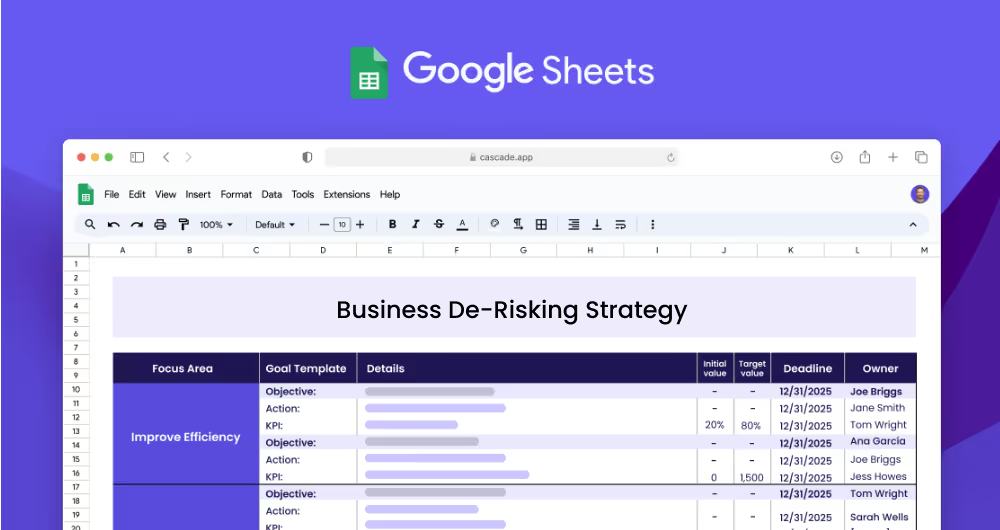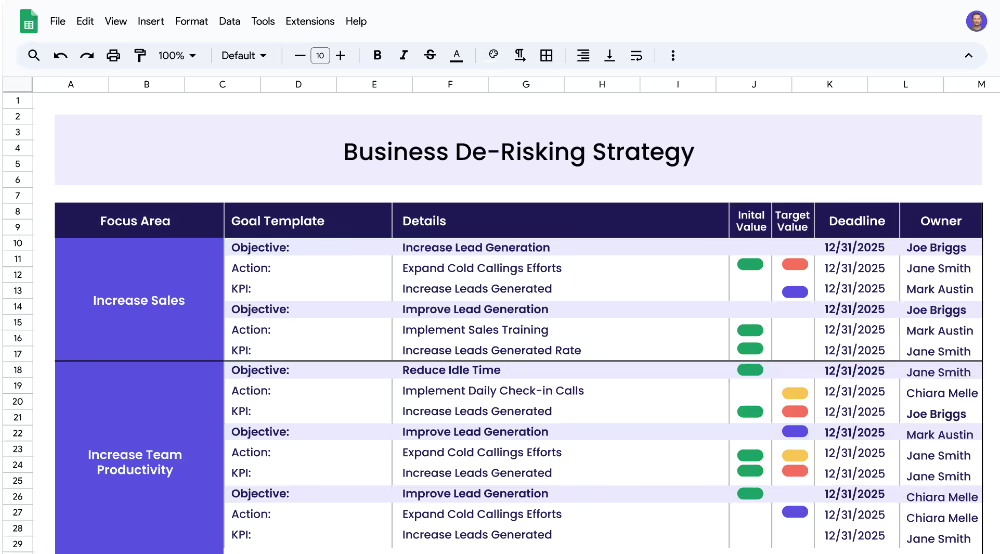A business de-risking strategy is a plan for reducing potential risks in a business or organization. It typically involves identifying potential risks, analyzing their impact, and implementing proactive measures to reduce the likelihood or impact of those risks. This plan can help an organization maximize its operational efficiency and effectiveness, while also protecting it from potential losses.
Each focus area has its own objectives, projects, and KPIs to ensure that the strategy is comprehensive and effective.
This Business De-Risking Strategy Template is designed to help risk management teams formulate strategies for reducing business risks through proactive measures, controls, and contingency planning. It can be used by organizations of any size and in any industry, and is designed to help teams identify and prioritize risks, set measurable goals and objectives, and implement projects to achieve those goals.
A focus area is a broad area of risk management that you want to focus on. Examples of focus areas may include risk management, processes, security, compliance, financial management, and more. Think about the risks to your organization and prioritize the areas that are most important to focus on.
Objectives are specific goals that you want to achieve within each focus area. For each objective, define a clear goal that you want to achieve and how you plan to measure success. Examples of some objectives for the focus area of Risk Management could be: Identify and Analyze Potential Risks, and Reduce Potential Risks.
KPIs, or Key Performance Indicators, are metrics that help you measure success for each objective. For each KPI, set an initial value, a target value, and a unit of measurement. This will help you track progress and determine if the objective has been achieved. An example of a KPI for the focus area of Risk Management could be: Track potential risks.
Once you have identified measurable goals for each objective, you can begin to think about the projects or actions that you need to implement in order to achieve those goals. Identify specific initiatives and assign each initiative to a team member or department. An example of a project related to Risk Management could be: Establish a Risk Register.
If you’re ready to enhance your overall strategy and see quicker, sustainable results, turn to Cascade Strategy Execution Software. Unlike static spreadsheets, Cascade offers a dynamic, integrated platform that supports real-time updates, centralized collaboration, and automated reporting. This empowers teams to efficiently track progress, adapt swiftly to changes, and maintain alignment throughout your organization. Sign-up for free or book a demo with one of our strategy experts to discover how we can help you optimize and speed up your strategic execution.


